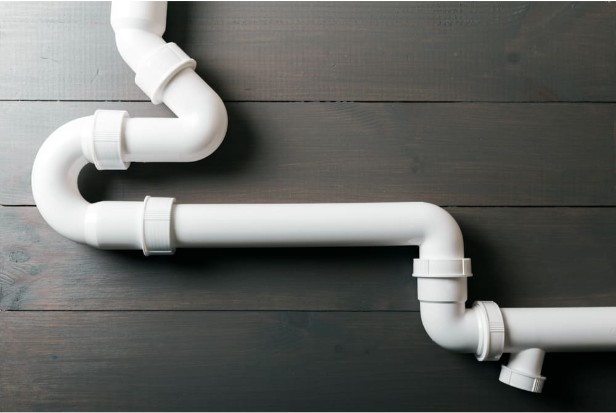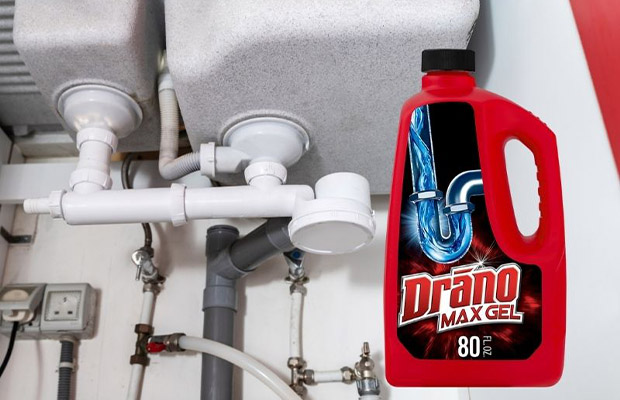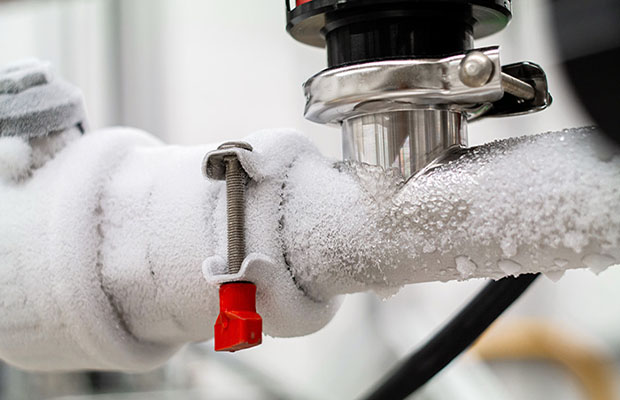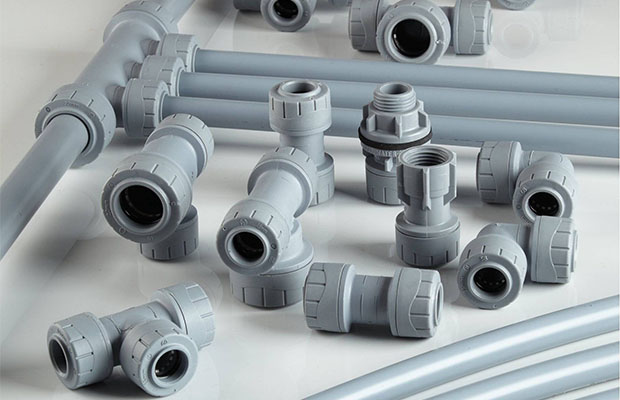
Has your home been installed with polybutylene pipes? You’ll learn how to spot them and what you can do to stop them when you read this.
What Is Polybutylene pipe? A cheap and simple solution to the sunbelt building boom from 1975 to 1995 was the use of polybutylene (PB) pipes, which are made of plastic resin. With the hope that they would last longer than the majority of other piping materials, they provided simple-to-install home plumbing systems on millions of homes.
Unfortunately, polybutylene turned out to be a complete failure. As it turns out, the plastic reacts with the oxidants and disinfectants found in public water supplies. Learn all there is to know about polybutylene piping and how to spot it by reading on!
Table of Contents
What is Polybutylene Pipe?
Vanguard, Qest, and Shell Oil were the three major businesses that created and produced polybutylene pipes. The pipes were marketed as “the pipe of the future” because they were strong, versatile and resisted cold temperatures.
They were a boon to home builders because they were more affordable than other materials, like copper plumbing, and required less time and expertise to install. Six to ten million homes were reportedly constructed with PB piping in the 1980s and the first part of the 1990s. Texas included, with the majority of them being in the South.
The use of polybutylene was banned by building codes in 1995 as a result of two significant lawsuits. Families across the nation received compensation for their damaged homes as a result of the $750 million settlement for leaking or burst pipes.
Read More: What Is PEX Pipe?
When Was Polybutylene Plumbing Banned?
In 1995, polybutylene pipe was outlawed, and American manufacturers were no longer permitted.
Because of excess supply, 1996 is probably the last year in which you will find a home with poly.
A number of class action lawsuits filed against polybutylene pipe suppliers and manufacturers served as the primary justification for the substance’s ban.
How to Identify Polybutylene Pipes?
Polybutylene pipes are ½” or 1″ flexible pipes that are usually gray or blue in color but can be silver, cream or black also. A surefire sign that you have PB piping in your home is a stamp on the side of the pipe that says “PB2110.”
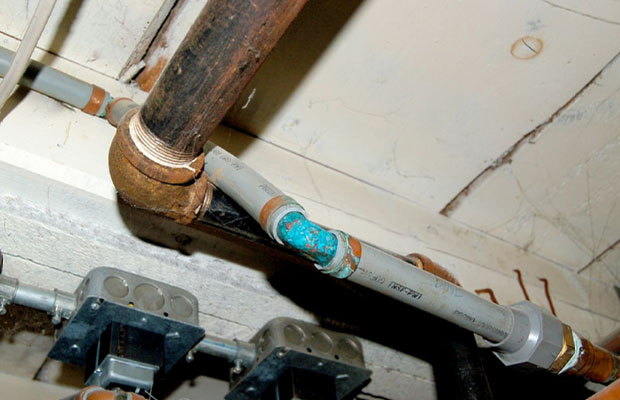
Specifically for water supply lines, polybutylene pipes were installed. They are not used as vent, waste, or drain pipes. Common places to identify them are:
- Attached to your water heater
- At your main shutoff valve
- Attached to sinks and toilets
- Along basement ceilings where pipes are exposed
It’s important to remember that during the relevant time period, polybutylene was frequently used to make main waterlines for homes. You cannot identify or determine whether these are ruptured because they are underground. There’s a good chance that your waterline is polybutylene piping if your home uses it elsewhere.
Another crucial point is that copper plumbing does not rule out the possibility of PB pipes in close proximity to sinks and other fixtures. Plumbers often made “stub outs” where they attached more attractive copper fittings to the exposed portions of a home’s plumbing. Your ceiling or walls might still contain PB.
What Are the Issues With Polybutylene?
A report that polybutylene pipes were bursting and causing property damage in 1996 led to the abrupt halt of polybutylene production. Numerous lawsuits concerning polybutylene pipes were brought in the 1980s and 1990s, and one resulted in a class action settlement.
A study on polybutylene was released by University of Illinois at Chicago. According to the study, certain elements in water, such as chlorine, can react with polybutylene piping and cause the fittings to corrode, crack, and flake off. The published paper claims that these minor fractures have the potential to grow larger, worsen over time, and ultimately result in a fracture that is deep enough for water to escape.
In spite of the fact that there are currently no laws requiring the replacement of polybutylene piping with another kind of pipe, some insurance providers will demand a total replacement, impose a higher premium, or flat-out decline to provide coverage. In addition, it is impossible to test the polybutylene’s tensile strength because deterioration takes place inside the pipe. As a result, many plumbers advise switching and being proactive because leaks can occur suddenly and cause significant property damage.
Read More: At What Temperature Do Pipes Freeze?
Do I Need Polybutylene Pipe Replacement?
We advise replacing your plumbing system if you find polybutylene in your house. In order to determine the integrity of your pipes, you should at the very least have them inspected by a qualified plumber. To do this, turn off your water supply and inspect your pipes for wear and cracks. To make sure that polybutylene piping is not prohibited in the event of a claim, you should also review your homeowners insurance.
The International Association of Certified Home Inspectors advises replacing the plumbing in any home that has polybutylene piping. Although there are no laws prohibiting buying or selling a home with PB plumbing, there is a high chance of leaks or bursts. A plumber will inspect the inside of the pipes, but a home inspector can recognize PB pipes.
Repiping your home is expensive, but the alternative is also pricey, and regrettably, the money from the legal settlements against PB pipe companies ran out a long time ago. The biggest risk is hidden leaks, which are in addition to a pipe bursting inside your house and causing property damage. Older pipes that leak water can cause pools of water to form inside walls and ceilings, where mold growth can be harmful. It’s time to have your pipes checked if you notice leaks or water stains.
The replacement of polybutylene pipes is a wise investment. It will increase the value of your house and give your plumbing a 50-year or longer lifespan.
How Do Polybutylene Piping Leaks Cause Damage?
A home may sustain damage from polybutylene pipe in the form of mold growth, drywall damage, or wood damage.
Mold Growth
Through the growth of mold, leaking poly piping can significantly harm a house.
In addition to causing mold to grow inside the walls when water leaks onto framing and drywall, it can also cause the spores to enter the HVAC duct system. Additionally, the water leaks from PB piping are typically undetectable and can rot for years inside the walls.
It is critical to replace the poly piping as soon as you notice any leaks and to remove any mold that is readily apparent.
Mold spores can spread throughout a house from the furnace, which can serve as a hub for distribution.
Wood Damage
In addition to encouraging the growth of mold, leaking water pipes can harm the house’s wooden framing, appliances, flooring, and furniture.
The framing of the house could become structurally compromised by just one small hidden leak. In addition to other structural problems, wood damage may cause sagging joists (and flooring).
And depending on the size of the home, the cost of replacing the entire home’s piping can range from $10,000 to $20,000 or more when you add up the damage caused by a number of small leaks.
In a home, one sudden, sizable pipe burst can cause tens of thousands of dollars in damage, let’s say while you are away.
Drywall Damage
Drywall may suffer serious harm as a result of polybutylene pipe leaks.
When the ceiling or wall buckles or bows out, it is already too late because the leaking PB can drip onto drywall for a long time without anyone noticing.
It will be necessary to completely replace the drywall.
How Much to Replace Polybutylene Pipe?
Depending on the number of fixtures, size of the house, need for drywall repair, and new piping type, replacing polybutylene plumbing can cost anywhere between $2,500 and $20,000.
Companies that replace polybutylene are called re-piping specialists, and they aren’t your typical plumber. These re-piping companies typically bill based on the number of fixtures, but there are other considerations, such as whether or not they will be patching all of the drywall holes.
Additionally, because most of the piping can be easily accessed if the house has a crawlspace, replacing polybutylene pipe can be much less expensive.
The cost will also be significantly higher if copper piping is chosen to replace the current piping.
CPVC or PEX piping are typically used in place of polybutylene piping.
Final Words On Polybutylene Pipe
When polybutylene first appeared, it was hailed as a brilliant invention for plumbing, but as time has shown, it has fallen far short (and been very wet).
Like many construction product defects, the “final word” on the quality of a product can take many years and lawsuits to bear fruit.
I sincerely hope that this guide has provided you with useful details on polybutylene and some of the most significant aspects of its development and application.

